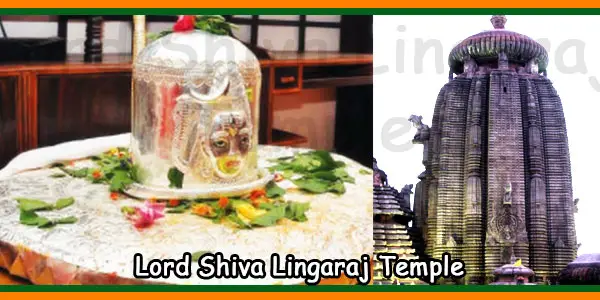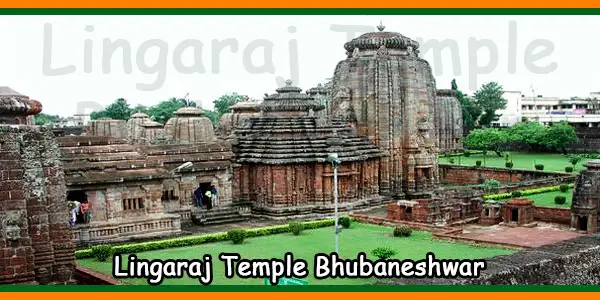The Lingaraj Temple or Bhubaneswar Lingaraja Temple is the largest and most revered shrine in the Temple City of Bhubaneswar, dedicated to Lord Harihara – a combination of Lord Vishnu and Lord Shiva. The temple was constructed in the 11th century and is home to a Swayambhu Shivalinga, believed to be 8 feet in diameter and 8 inches tall.
This architectural marvel is a top tourist destination, however, only Hindus are allowed to enter the temple premises. Non-Hindus can view the temple’s magnificence from a platform built outside the complex. The Lingaraj Temple attracts thousands of devotees throughout the year, with a significant surge during festivals such as Mahashivratri and Ashokastami.
The temple is built in the Kalinga style of architecture and adorned with finely carved sculptures on its walls. The vast temple complex also features 150 smaller shrines. The tower of the main sanctum is remarkably high, visible from afar, adding to the temple’s grandeur.
Lingaraj Temple Timings:
Morning: 6:00 AM to 12:30 PM
Evening: 3:30 PM to 9:00 PM
Break Timings: 12.30 PM to 3.30 PM.
Lingaraj Temple Pooja Timings:
Mahasnana (ablution) – 12:00 Noon to 3:30 PM (the temple will be closed)
Ballabha Bhoga (Offerings) – 1:00 PM to 1:30 PM
Sakala Dhupa – 2:00 PM
Bhanda Dhupa – 3:30 PM
Ballabha Dhupa – 4:30 PM
Dwipahar Dhupa (mid-day meal) – 5:00 PM
Palia Badu – 7:00 PM
Sahana Dhupa (light meal) – 8:30 PM
Bada Singara (the great decoration) – 9:30 PM

Bhubaneswar Lingaraja Temple History:
As per the Puranas, Lord Shiva expressed his preference for Bhubaneswar or Ekamra Thirtha in Benares to Goddess Parvati. Intrigued by this, Parvati disguised herself as a shepherdess and explored the city, where she encountered two demons named Kritti and Vasa who sought to marry her. Parvati cleverly asked them to carry her on their shoulders and then crushed them under her weight. Impressed by her ingenuity, Lord Shiva created Lake Bindu Saras to quench Parvati’s thirst and decided to reside in Bhubaneswar as Krittivasas or Lingaraja.
The Lingaraj Temple believed to be the oldest Lord Shiva temple in Bhubaneswar, has been mentioned in the Hindu scripture Brahma Purana. The present structure of the temple was built in the 11th century, although some parts date back to the 6th century. It is said that as the temple’s construction neared completion, the Jagannath sect began to flourish. This is why both Lord Shiva and Lord Vishnu are worshipped at the temple.
Constructed with solid red sandstone, the Lingaraj temple has an imposing fortress-like appearance from the outside. The temple complex boasts a towering 180-foot high structure with a Jagamohana, Natamandir, and Bhogamandapa, all surrounded by a 7-foot-thick, gigantic wall. The spacious temple courtyard, filled with over 100 shrines, is unmatched in its grandeur. Bhubaneswar is the ancient capital of the Kalinga Empire.
Archaeology Department About Lingaraja temple
The Lingaraj Temple, an architectural masterpiece, is a quintessential example of Kalinga-style temple architecture. Chronicled as built during the reigns of three kings – Yayati Kesari, Ananta Kesari, and Lalatendu Kesari – it is considered the most majestic Indian temple, imparting an impression of great height. The temple’s height is brought into relief by the strongly drawn vertical lines of the ribs, with two miniature replicas of the entire temple on each side. The top shikhara is crowned by a ribbed Amalaka (myrobalan) over which rests a pot-shaped finial (Kalash).
The Lingaraj Temple comprises four structures – Deul or Sri Mandir or Vimana, Jagamohana or the hall mandapa, Nata-Mandira or the dancing hall, and Bhoga-Mandira or the hall of offerings. The last two are later additions when the Ganga kings ruled. The Vimana, which is 127 feet high, enshrines a Svayambhu (self-established) linga, the phallic form of Lord Shiva. The temple’s construction dates back to the 6th century, with the current structure built during the 11th century. It is mentioned in the Hindu Scripture, Brahma Purana, and has an enduring historical and cultural significance.
Important Note: Bhubaneswar Lingaraja Temple is open only to Hindus for entry, while non-Hindu visitors can admire its architectural grandeur from a distance. Photography is strictly prohibited in the temple.

Festivals in Bhubaneswar Lingaraja Temple
The Krittivasas Temple is a hub of various festivals that add more charm and allure to its divinity. Among the most popular festivals are Chandan Yatra, Rath Yatra, and Shivratri, which present a sight of pure devotion and attract thousands of devotees every year.
Shivratri is perhaps the most famous festival celebrated annually in Phalgun month. Devotees throng the temple to make offerings to Lord Harihara and fast throughout the day. The main celebration takes place during the night when devotees break their fast after the lighting of the Mahadipa, an enormous earthen lamp.
Another main festival of Lingaraj Temple is the Chandan Yatra or Sandalwood ceremony. The 22-day celebration sees those who serve the temple disporting themselves in a specially made barge in the Bindusagar tank. Both the deities and devotees are sanctified with sandalwood paste to protect them from the heat. Dances, communal feasts, and merrymaking are arranged by the temple associates.
Ashokashtami witnesses splendid celebrations of Lingaraj’s Rath Yatra when the deity is taken to the Rameshwar Deula Temple seated atop a chariot. Devotees pull the colorful chariots of Lingaraj and his sister Rukmani to the temple, which is considered the greatest service of the Lord. These festivals are a true reflection of the rich culture and traditions of Lingaraj Temple, making it a must-visit tourist destination.
Krittivasas Temple Religious Significance
Bhubaneswar, the capital city of Odisha, is also known as Ekamra Kshetra due to its connection with the Lingaraja Temple. The temple’s presiding deity was originally found under a mango tree, known as Ekamra in Sanskrit. According to the Ekamra Purana, a Sanskrit treatise from the 13th century, the deity was not seen as lingam during the Satya and Treta yugas, and only in the Dvapara and Kali yugas, it emerged as a lingam.
The lingam present in the Lingaraja Temple is a natural unshaped stone that rests on a Sakti, known as Krutibasa or Swayambhu. Such a lingam is found in 64 places in different parts of India. During the early 12th century, with the advent of the Ganga dynasty, the Jagannath sect became predominant during the construction of the temple. The Gangas remodeled the temple and introduced certain Vaishnavite elements such as images of Vaishnava Dwarapalas, namely Jaya and Prachanda. The temple’s flag was fixed to a Pinaka bow instead of the trident usually found in Shiva temples.
Temples Near Lingaraj Temple:
Puri Temple
Konark Temple
Biraja Temple
Tarini Temple
Rajarani Temple
Dhauli Temple
Rajarani Temple
Nearest Airport: Biju Patnaik International Airport, Bhubaneswar 3 Kilometers.
Nearest Railway Station: Bhubaneswar Junction 4.5 Kilometers.
Shiva Vishnu Temple Address:
Lingaraj Temple Road,
Lingaraj Nagar,
Old Town,
Bhubaneswar,
Odisha – 751002
